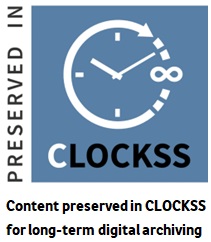Critical Study of the Film The Man Who Sold His Skin by Kaouther Ben Hania: Between Art, Exploitation and Freedom
DOI:
https://doi.org/10.63939/AJTS.gxr92288Keywords:
Contemporary Art, Cinema, The Man Who Sold His Skin, Social Critique, Kaouther Ben HniaAbstract
This study examines The Man who sold his skin (L’Homme qui a vendu sa peau) by Kaouther Ben Hnia, focusing on how the film employs contemporary art as a lens to address social, political and ethical issues. The central problem revolves around the commodification of human existence and the intersection of freedom and exploitation in a globalized world.
The methodology involves a critical analysis of the film's narrative, symbolism, and visual elements to uncover its critique of systemic inequalities, the art market's role in perpetuating exploitation, and the moral dilemmas surrounding migration and consent. The findings reveal the film's capacity to challenge capitalist values and provoke discourse on humanity's boundaries, positioning it as a significant piece of socially engaged cinema.
Downloads
References
Arendt, H. (1951). The Origins of Totalitarianism. Los Angelos: Harcourt Brace
Ben Hania, K. (2021). The Man Who Sold His Skin: Artistic Freedom and Exploitation. Tunisian Film Journal, 12(3), 60-70
Crow, T. (2018). The Ethics of Contemporary Art. Art and Society Journal, 25(1), 71-75
Danto, A. C. (1981). The Transfiguration of the Commonplace: A Philosophy of Art. USA: Harvard University Press
Dumont, J. (2021). The Silent Cry: Body and Silence in Contemporary Cinema. Journal of Visual Culture, 19(2), 101-105
Dupuis, H. (2020). Minimalism and Social Commentary in The Man Who Sold His Skin. Contemporary Film Studies, 14(2), 45-52
El-Masri, M. (2020). The Art of Exploitation: Art and Global Inequality. Los Angeles: Cairo University Press
Gharbi, F. (2020). The New Voices of Tunisian Cinema. Cinema and Society Review, 32(4), 45-58
Haddad, N. (2021). Art, Exploitation, and Refugees: A Cinematic Commentary in The Man Who Sold His Skin. Journal of Contemporary Cinema, 19(4), 70-75
Hughes, R. (1990). The Shock of the New: The Hundred-Year History of Modern Art. New York: Alfred A. Knopf
Hughes, R. (2017). Art, Exploitation, and the Ethics of Contemporary Practices. The Art Review Quarterly, 34(2), 95-100
Hughes, R. (2017). Culture of Shock: Art and Morality in Contemporary Society. Art Review Quarterly, 34(2), 120-125
Jones, M. (2020). The Art of Exploitation: Costumes and Identity in The Man Who Sold His Skin. International Journal of Film Studies, 23(2), 112-118
Laroche, C. (2020). The Aesthetics of Voyeurism in Contemporary Art Cinema: From the Gallery to the Screen. Cinema Studies Quarterly, 8(3), 75-80
Marx, K. (1867). Das Kapital: A Critique of Political Economy. USA: Verlag von Otto Meissner
Miel, S. (2019). Art or Exploitation? Reflections on Contemporary Practices. Journal of Contemporary Art Ethics, 11(1), 43-47
Sami, N. (2019). From Refugee to Commodity: The Commercialization of Human Suffering. Global Arts Review, 15(4), 52-60
Sartre, J. P. (1943). Being and Nothingness: An Essay on Phenomenological Ontology. USA: Philosophical Library
Sidi, F. (2021). The Aesthetic of Alienation: Space and Isolation in The Man Who Sold His Skin. Arab Cinema Review, 8(1), 55-60
Smith, J. (2020). Art, Ethics, and Society: A Critical Exploration of Cinema's Role in Addressing Global Issues. Los Angeles: Cambridge University Press
Weber, M. (1905). The Protestant Ethic and the Spirit of Capitalism. New York: Charles Scribner’s Sons
Downloads
Published
Issue
Section
License

This work is licensed under a Creative Commons Attribution-NonCommercial 4.0 International License.
As an open-access the journal follows the CC BY-NC 4.0 Attribution-NonCommercial 4.0 International which states that:
- you are free to:
- Share— copy and redistribute the material in any medium or format.
- Adapt— remix, transform, and build upon the material.
- Under the following terms:
- Attribution— You must give appropriate credit, provide a link to the license, and indicate if changes were made. You may do so in any reasonable manner, but not in any way that suggests the licensor endorses you or your use.
- NonCommercial — You may not use the material for commercial purposes.
- No additional restrictions — You may not apply legal terms or technological measures that legally restrict others from doing anything the license permits.












